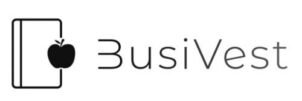Master the basics of reading a balance sheet. Learn how assets, liabilities, and equity reveal the health of any business — simplified for Indian entrepreneurs.
A great product, strong marketing, and loyal customers — all look good from the outside.
But what about the inside?
That’s where the balance sheet comes in.
It’s like an X-ray of your business — showing whether it’s healthy, struggling, or on the edge.
Whether you’re an entrepreneur, investor, or student of business, this guide will simplify how to read a balance sheet — so you can understand what the numbers are really saying.
Let’s decode it, line by line.
📊 What Is a Balance Sheet?
A balance sheet is one of the three core financial statements (along with the income statement and cash flow statement).
It shows your company’s:
-
What it owns (assets)
-
What it owes (liabilities)
-
What’s left for the owner (equity)
🧮 Formula:
Assets = Liabilities + Equity
🏢 Example: Let’s Use a Chai Café
Imagine you start a small chai café. On Day 1, your balance sheet might look like:
| Assets | Liabilities | Equity |
|---|---|---|
| ₹30,000 Cash | ₹10,000 Loan | ₹20,000 (Owner’s) |
You took ₹10K loan from a friend and put ₹20K of your own.
Now let’s break this down properly.
💰 1. Assets – What Your Business Owns
Assets are everything valuable your business controls.
✅ Types of Assets:
| Type | Examples |
|---|---|
| Current Assets | Cash, inventory, accounts receivable |
| Fixed Assets | Furniture, land, machinery |
| Intangible Assets | Patents, brand value, goodwill |
📌 Pro Tip:
Watch your current assets closely — they affect day-to-day cash flow.
🧾 2. Liabilities – What Your Business Owes
These are your debts and obligations.
✅ Types of Liabilities:
| Type | Examples |
|---|---|
| Current Liabilities | Vendor bills, short-term loans |
| Long-Term Liabilities | Bank loans, EMIs, mortgages |
📌 Red Flag:
High short-term liabilities with no cash reserves = warning sign.
📈 3. Equity – The True Owner’s Share
Also called Shareholder’s Equity or Owner’s Capital.
It’s what remains when all liabilities are paid off.
Formula:
Equity = Assets – Liabilities
✅ Includes:
-
Owner’s initial capital
-
Retained earnings (profits reinvested)
-
In case of a company: shares issued, reserves
📌 Note:
Growing equity over time = a healthy, profitable business.
🧮 Sample Balance Sheet: Year-End
Here’s what the chai café looks like after 1 year:
| Assets | Amount |
|---|---|
| Cash | ₹15,000 |
| Inventory (tea leaves) | ₹5,000 |
| Equipment (chai cart) | ₹20,000 |
| Total Assets | ₹40,000 |
| Liabilities | Amount |
|---|---|
| Vendor dues | ₹5,000 |
| Bank loan (EMI left) | ₹10,000 |
| Total Liabilities | ₹15,000 |
| Equity | Amount |
|---|---|
| Owner’s Capital + Profit | ₹25,000 |
| Total Equity | ₹25,000 |
✔️ Assets (₹40K) = Liabilities (₹15K) + Equity (₹25K)
🔍 What You Should Look For as an Entrepreneur
| Indicator | What It Tells You |
|---|---|
| Debt-to-Equity Ratio | Too much debt? Risky position |
| Current Ratio (Assets/Liabilities) | Can you pay short-term bills? |
| Retained Earnings Growth | Is your business building wealth? |
| Fixed Asset Usage | Is your money stuck in machinery? |
💼 Why It Matters (Even for Small Businesses)
-
Want to get a loan? Banks look at your balance sheet.
-
Pitching to investors? They judge you by these numbers.
-
Growing fast? A bad balance sheet can still sink you.
📌 Even if you’re a freelancer or solopreneur — make one quarterly.
📚 Tools You Can Use
| Tool | Use Case |
|---|---|
| Google Sheets | Manual tracking for small biz |
| Zoho Books | Indian-friendly accounting |
| QuickBooks | Global SaaS option |
| TallyPrime | For registered SMEs (India) |
🧠 Final Thoughts:
Numbers don’t lie — but they do speak in code.
Learning to read a balance sheet helps you:
-
Stay in control
-
Make better decisions
-
Impress partners and clients
-
Avoid financial traps
📌 You don’t need to be a CA. You just need to be aware.
Start with your own balance sheet — even if it’s just ₹5,000 in assets.

